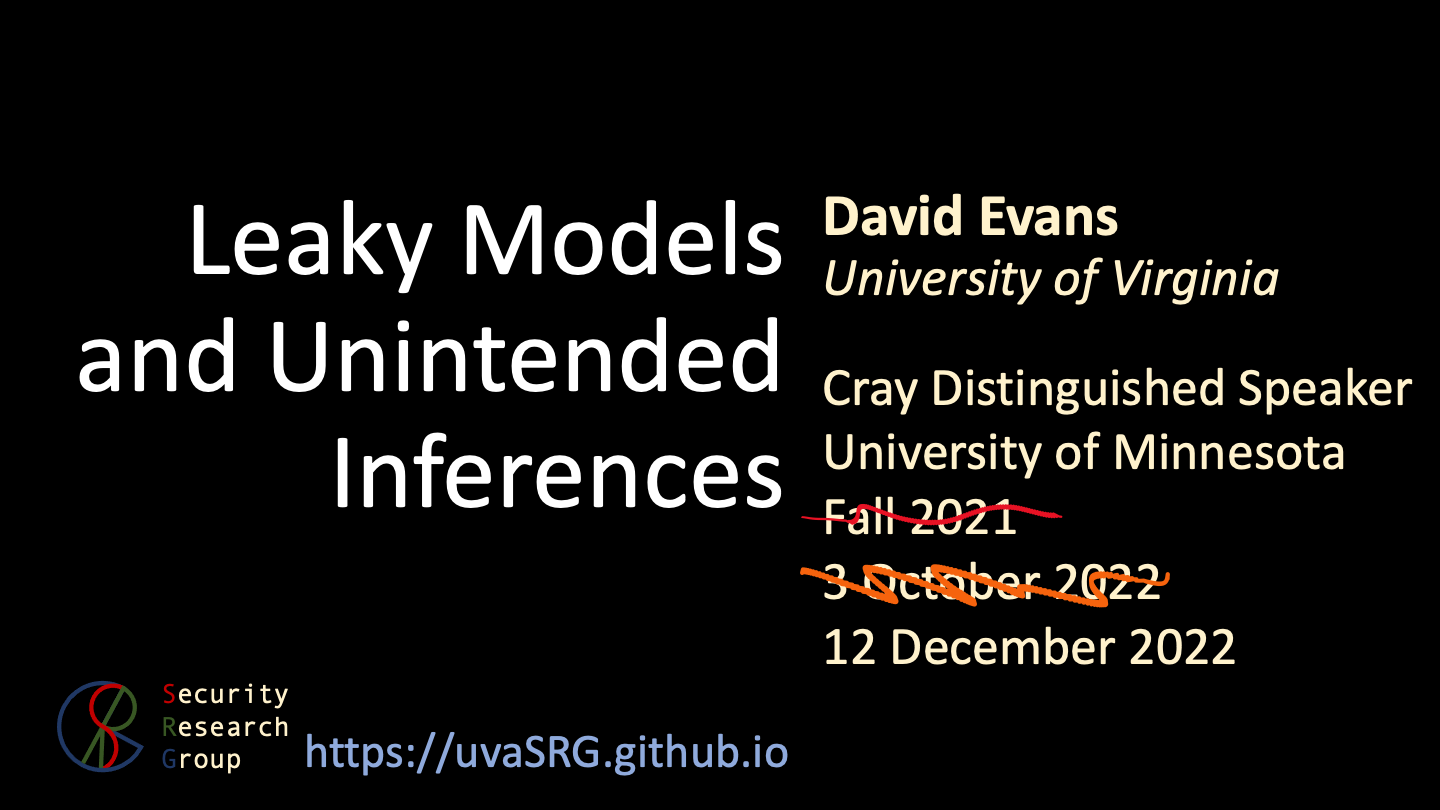Dissecting Distribution Inference
(Cross-post by Anshuman Suri)
Distribution inference attacks aims to infer statistical properties of data used to train machine learning models. These attacks are sometimes surprisingly potent, as we demonstrated in previous work.
KL Divergence Attack
Most attacks against distribution inference involve training a meta-classifier, either using model parameters in white-box settings (Ganju et al., Property Inference Attacks on Fully Connected Neural Networks using Permutation Invariant Representations, CCS 2018), or using model predictions in black-box scenarios (Zhang et al., Leakage of Dataset Properties in Multi-Party Machine Learning, USENIX 2021). While other black-box were proposed in our prior work, they are not as accurate as meta-classifier-based methods, and require training shadow models nonetheless (Suri and Evans, Formalizing and Estimating Distribution Inference Risks, PETS 2022).
Cray Distinguished Speaker: On Leaky Models and Unintended Inferences
Here’s the slides from my Cray Distinguished Speaker talk on On Leaky Models and Unintended Inferences: [PDF]

The chatGPT limerick version of my talk abstract is much better than mine:
A machine learning model, oh so grand
With data sets that it held in its hand
It performed quite well
But secrets to tell
And an adversary’s tricks it could not withstand.
Thanks to Stephen McCamant and Kangjie Lu for hosting my visit, and everyone at University of Minnesota. Also great to catch up with UVA BSCS alumn, Stephen J. Guy.
On the Risks of Distribution Inference
(Cross-post by Anshuman Suri)
Inference attacks seek to infer sensitive information about the training process of a revealed machine-learned model, most often about the training data.
Standard inference attacks (which we call “dataset inference attacks”) aim to learn something about a particular record that may have been in that training data. For example, in a membership inference attack (Reza Shokri et al., Membership Inference Attacks Against Machine Learning Models, IEEE S&P 2017), the adversary aims to infer whether or not a particular record was included in the training data.